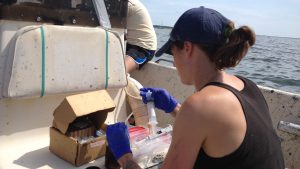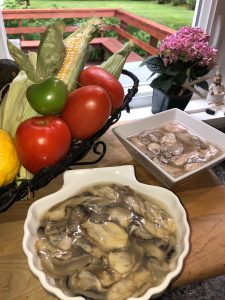Search results for: which is the best site to book cheap airline ticket india local flight phone number 1-800-299-7264
WHSeaGrant-EnvTech
WHSeaGrant-EnvTech
Read MoreUnderstanding the Waquoit Bay Ecosystem
A Q&A with Sarah Foster Sarah Foster is a Boston University graduate student doing her dissertation research in Waquoit Bay (Cape Cod, Massachusetts). A biogeochemist, Sarah investigates the impact hypoxia, or low oxygen, in the water has on crucial functions within Waquoit Bay’s ecosystem. She recently published research she and her co-author, Wally Fulweiler conducted in…
Read More2002-2004 Projects
Development of a Carbon Isotopic Method for Quantifying Groundwater Inputs to Estuaries Daniel C. McCorkle, Woods Hole Oceanographic Institution The contribution of groundwater to the coastal ocean and to estuaries is not well understood, primarily due to the difficulties associated with identifying and distinguishing between groundwater inputs and other freshwater inputs, such as surface river…
Read MoreIs There a Market for Shucked Oysters?
It’s no secret that we’ve got a lot of oysters on Cape Cod. With restaurants closing due to the COVID pandemic, oyster growers have lost their primary customers and many are left holding the bag on this year’s oyster harvest. In Massachusetts, more than 90 percent of oysters are eaten raw on the half-shell and…
Read More2017 NCC
Nantucket Coastal Conference June 6, 2017 Nantucket Atheneum Great Hall, Nantucket, Mass. Keynote Coastal Change Rob Thieler, USGS –Woods Hole, Center Director Coastal Erosion Shifting Sands and the Shorelines of Nantucket Andrew Ashton, Woods Hole Oceanographic Institution (WHOI) Sconset Geotube Update Maria Hartnett, Epsilon Associates; Twenty-three Years of Monitoring Sciasconset, MA Mitch Buck, Woods Hole…
Read MoreMapping Katama Bay’s Restless Sands
Boaters on Martha’s Vineyard know navigational maps of Katama Bay become obsolete very quickly. Why do the sands at the bottom of the Bay shift so much and so often? Katama Bay has two inlets. Water pours in from Vineyard Sound through Edgartown Channel, and from the Atlantic Ocean through Katama Inlet. The size and…
Read MoreFocal Points – Shellfish Resource Management in Massachusetts
Focal Points – Shellfish Resource Management in Massachusetts September 2000 – For many residents of Massachusetts, a visit to the tidal flats to harvest shellfish is not only a benefit of living near the coast, but also an indicator of the quality of life.
Read MoreFocal Points – Shellfish Aquaculture in Massachusetts
Focal Points – Shellfish Aquaculture in Massachusetts September 2000 – Shellfish aquaculture in Massachusetts is thriving! Though centuries old, the practice of farming shellfish is a fairly recent undertaking in the United States—within the last 150 years.
Read MoreWHOI-W-91-001 WHOI U.S. Strategies for Coo
WHOI-W-91-001 WHOI U.S. Strategies for Coo
Read MoreWHOI-W-05-001 Whitlach, B. International Inv
WHOI-W-05-001 Whitlach, B. International Inv
Read More

